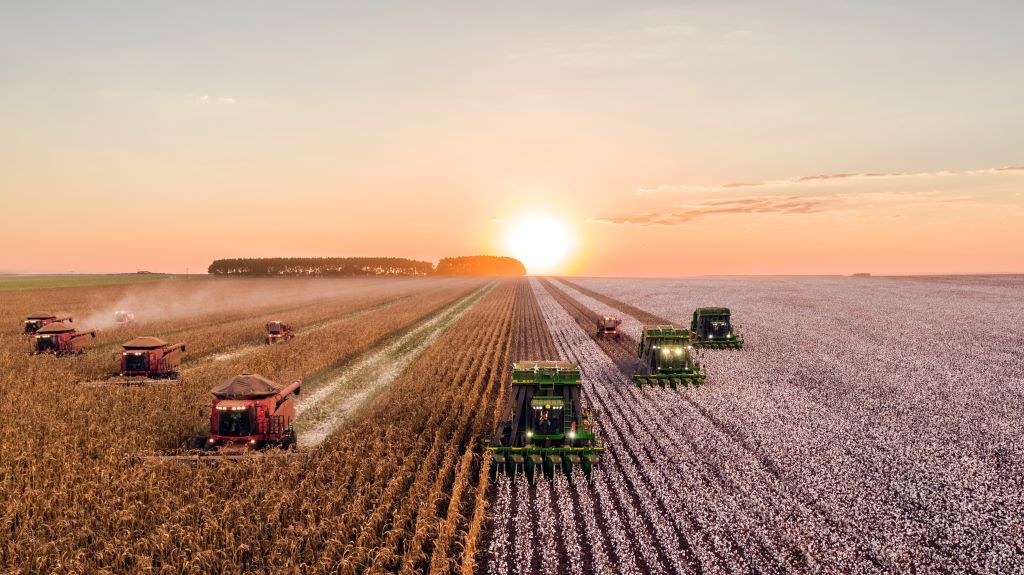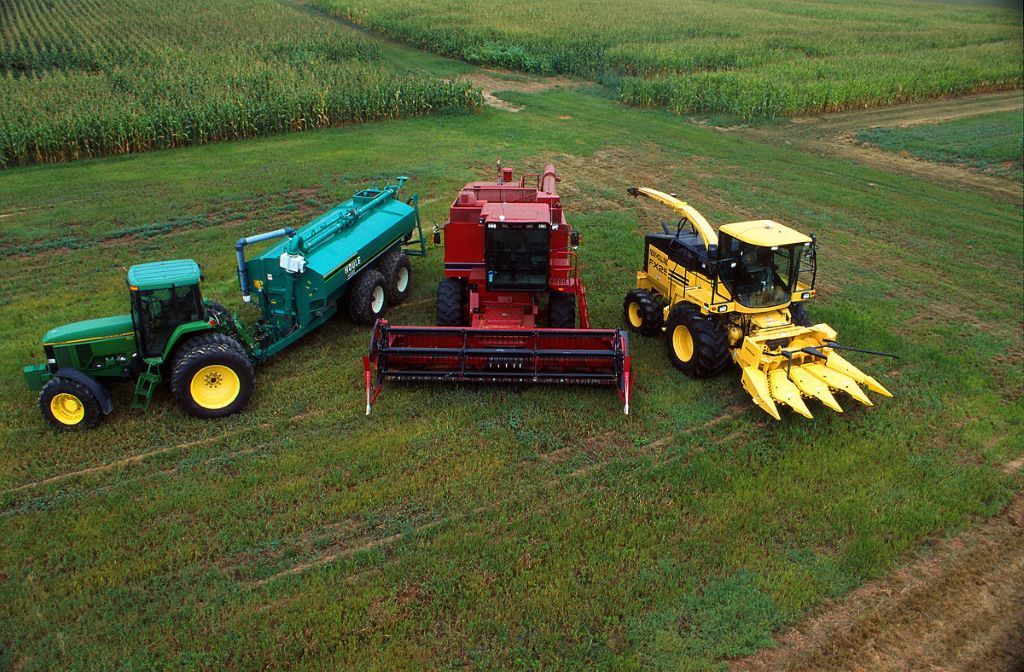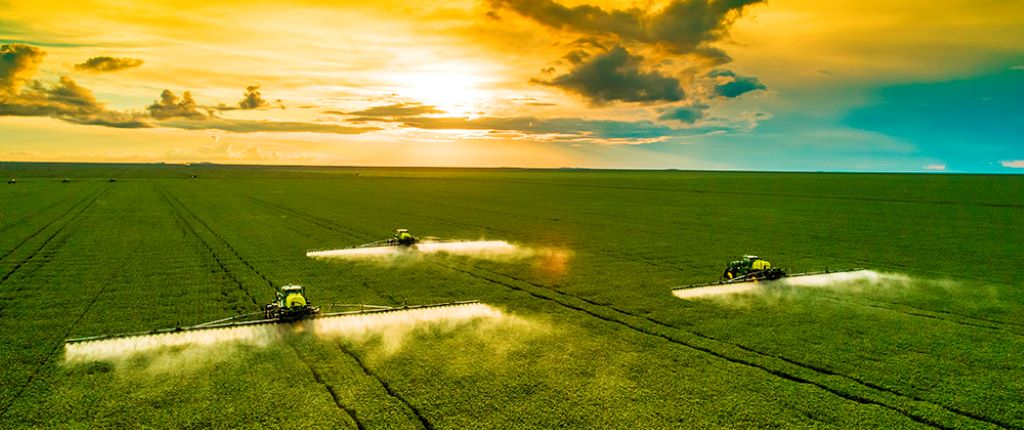The years following World War I brought immense change to the farming industry. Advancements in agricultural technology revolutionized the way farmers worked their land and ran their operations. New machinery, improved planting and harvesting methods, and innovative farming techniques increased yields, reduced labor demands, and transformed the landscape of rural America.
The Rise of Motorized Farm Machinery

One of the most significant technological changes was the rise of motorized farm machinery. During World War I, tremendous advancements were made in internal combustion engines and motor vehicle manufacturing. After the war, many of these technologies were adapted for agricultural uses. The tractor rapidly replaced horse-drawn plows and became one of the most important and ubiquitous pieces of farm equipment.
In the early 1900s, steam engine tractors had been in limited use on larger farms. But they were cumbersome, expensive, and dangerous. The first commercially successful gasoline-powered tractors were introduced around 1916 by companies like Fordson, International Harvester, John Deere, and Allis-Chalmers. Throughout the 1920s, tractors became more affordable and reliable. By 1930, over 950,000 farms had a tractor. This allowed farmers to cultivate much larger areas than previously possible.
The tractor also enabled the development of new powered implements that greatly increased productivity. Equipment, like combine harvesters, cultivators, reapers, and threshers, could now be run by tractor engines instead of manual labor. Farmers gained the ability to plow, plant, cultivate, and harvest more acres with less work.
Improved Planting, Cultivating, and Harvesting
In addition to powering machinery, tractors facilitated new farming techniques. Plows, planters, and cultivators could be mounted or trailed behind a tractor. This allowed farmers to adopt row crop farming methods not practical with horse-drawn equipment.
Crops like corn and wheat could now be sown efficiently in straight rows, with space between each row. This row crop approach maximized yields while also allowing room for mechanical weeders and cultivators to move through the fields. Tractors and mounted implements greatly reduced planting and cultivating times compared to manual, horse-drawn methods.
Mechanized harvesting solutions also emerged to handle row crops. Small grains like wheat had been harvested by horse-drawn reapers since the mid-1800s. But handheld corn pickers limited how much acreage a farmer could manage. New mechanical corn pickers hit the market in the 1920s that could be tractor-pulled, covering up to 12 rows at a time. Similar technology was soon developed for harvesting other crops, like potatoes.
The Rise of Gasoline and Diesel Engines
Beyond powering tractors and machinery, gasoline engines found other farming applications after World War I. The first practical gasoline-powered truck was produced in 1896. But trucks did not become commonplace on American farms until mass production made them more affordable in the 1920s.
Trucks offered farmers much greater versatility than horses for transporting goods and traveling to town. Portable gasoline engines also gained popularity for running irrigation pumps, grinders, and other stationary equipment. The adoption of gas and diesel engines for a variety of farm tasks greatly reduced manual labor demands.

Advances in Plant Breeding and Genetics
Along with mechanical technology, new scientific understanding also drove agricultural advancement after World War I. Innovations in plant genetics and breeding helped farmers increase yields and meet demands of a growing population.
Hybrid seed corn was one of the most important developments of the era. Pioneering work by agricultural scientists like Henry A. Wallace in the 1910s identified ways to systematically cross-pollinate corn plants to produce hybrid offspring with desirable traits like drought-resistance and higher yields. Hybrid corn seeds began to be commercially marketed in the 1920s. By 1933, around 93% of corn acreage was planted with hybrid varieties. This genetic improvement helped boost average corn yields significantly.
Commercial plant breeders also made strides with other cereal crops and vegetables. Varieties were bred to be disease-resistant, more uniform in ripening, and higher-yielding. Farmers gained access to seeds, roots, and nursery stock that were better adapted to their particular soil and climate conditions.
Understanding of fertilizers and plant nutrition also expanded, assisted by increased availability of nitrogen and phosphorus. This enabled farmers to improve the fertility, productivity, and health of their soils.
The Spread of Electricity and Utilities
Rural electrification was another pivotal technological change for farmers in the 1920s and 30s. The first electric generators reached American farms around the turn of the century. But only about 10% of farms had electricity even by 1930.
The Rural Electrification Administration was established in 1935 as part of the New Deal. This provided federal loans to bring electric lines and coops to rural areas. By the end of the 1930s, nearly 33% of farms had electricity. Availability continued expanding through the 1940s.
Electrification enabled farm homes to add lighting, appliances, and other modern conveniences common in cities. For farming operations, electricity allowed the use of electric motors, heating systems for livestock buildings, and refrigeration. Grain dryers, pumps, milking machines, and other productivity-enhancing technologies depended on electric power.
Municipal water systems also became more common, replacing hand-pumped wells. Access to pressurized running water relieved some of the physical burdens on farm families and supported larger-scale operations.

The Effects of Technology on Farmers
These technology innovations profoundly reshaped the farming landscape. They enabled a transition to commercial, industrial-scale agriculture dependent on machinery, fossil fuels, and science-driven practices.
At the same time, technology reduced the need for animal power and manual labor. Machinery, chemicals, and breeding advancements allowed farmers to accomplish more with less help. The number of Americans working in agriculture plunged from around 31% in 1920 to only about 21% by 1930.
For farmers, this technological transformation brought a mix of benefits and costs:
Benefits:
- Increased productivity and yields with less labor
- Ability to manage larger farms and plant more acres
- Reduced back-breaking physical work through mechanization
- Higher profits for farms that adopted the new technologies
- Better connections to electricity, utilities, and transportation
Costs:
- Significant expenses to purchase tractors, implements, vehicles, etc.
- Increased debt loads to finance the new equipment
- Ongoing operating costs for fuel, oil, repairs, etc.
- Loss of blacksmithing and other traditional skills made obsolete
- Displacement of small family farms unable to afford the technologies
- Loss of farm jobs and rural community ties as labor declined
- Increased economic risks if investments did not pay off
The benefits largely accrued to bigger, financially solvent farm operations. They could readily adopt the emerging technologies and expand their acreage and productivity. Many small subsistence farms struggled to adapt.
The new machinery costs were challenging for small farmers to bear. Between 1930 and 1935, around 1 million farms ceased operation. Concurrently, the total number of farm acres declined much less, indicating a shift toward fewer but larger farms.
For the farms that endured and grew, technologies brought immense change to longstanding ways of work. Farmers became tractor drivers, machine operators, and motor vehicle drivers as horses and mules vanished from fields. Time-honored techniques like saving seeds gave way to buying commercial hybrids.
The deskilling of agricultural work accelerated as it became less about accumulated personal knowledge and more about purchasing the right technologies. Farming gained efficiencies but lost connection to tradition and community.
Ultimately, the advances in mechanization, power systems, plant breeding, and chemicals allowed American farms to become industrialized commodity producers. Technological innovation enabled fewer farmers to grow more food and fiber. But it came at the cost of disrupting rural ways of life, landscapes, and livelihoods. The tractor and its allied technologies indelibly shaped the direction of modern agriculture.
Frequently Asked Questions
What made tractors so important for farms after WW1?
Tractors motorized the power for plowing, planting, and harvesting instead of relying on animal muscle. This allowed farmers to cultivate much larger areas in less time. Tractors were also versatile platforms for pulling a variety of implements like plows, planters, cultivators, and harvesters.
How did electricity change farming?
Electrification brought lighting, appliances, and motors to the farm. Electric-powered systems for milking, feeding, ventilation, refrigeration, drying grain, irrigation, and other tasks reduced physical labor and increased productivity.
What kinds of tools did new machinery replace on farms?
Tractors and machinery replaced horse/mule-drawn equipment like plows, seed drills, cultivators, wagons, and buggies. Powered implements also replaced many hand tools for harvesting, like scythes, sickles, and corn knives.
Did the government help promote adoption of farming technology?
Yes, the Rural Electrification Administration provided loans to bring electric coops to rural areas. The Extension Service taught farmers how to use new technology. And universities did research on mechanical, genetic, and scientific advancements.
How did these technologies affect farm jobs and workers?
Demand for farm labor fell as machinery reduced need for workers. Smaller farms relying on family labor struggled to compete. Sharecroppers and tenants were displaced as tractors overtook mule farming. Agricultural work became more machine-focused.
Conclusion
In the decades following World War I, American agriculture underwent a technology-driven revolution. The rapid adoption of mechanized tractors and implements, as well as scientific advancements in plant breeding, transformed farming into a highly efficient, industrialized industry dependent on fossil fuels. The impact of technology on the construction sector parallels the transformative effects witnessed in agriculture, where advancements delivered productivity gains but also disrupted traditional rural life and labor patterns, with small family farms unable to afford new technologies being consolidated into larger operations.
As agriculture relied more on machines and less on animals and manpower, longstanding farm employment practices faded away. The technological shake-up from roughly 1920-1940 permanently altered the business of growing food and fiber in America. While not without costs, the modernization of farming through advanced tractors, implements, and breeding methods enabled American agriculture to become a global powerhouse.



